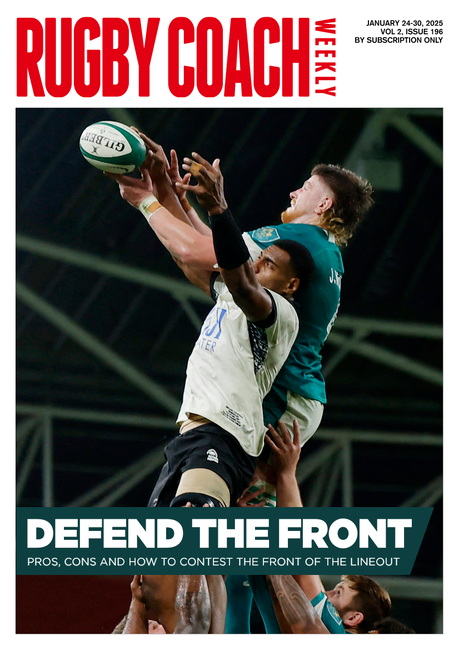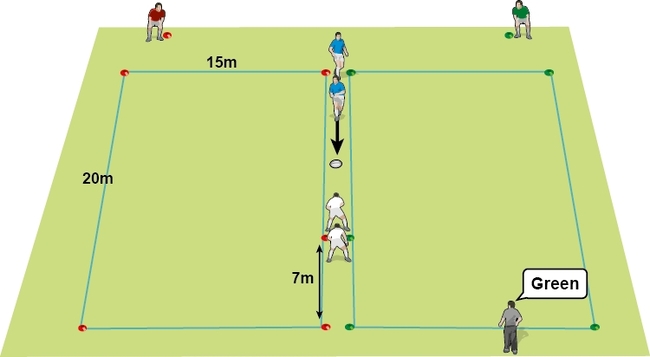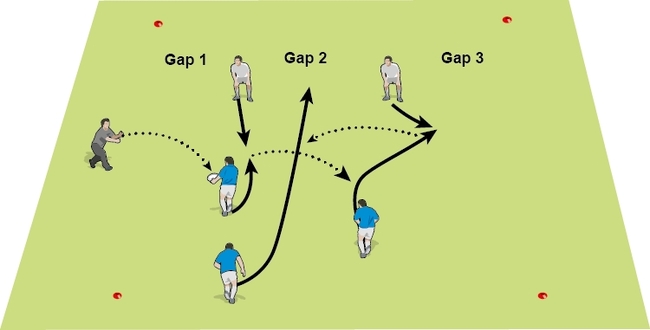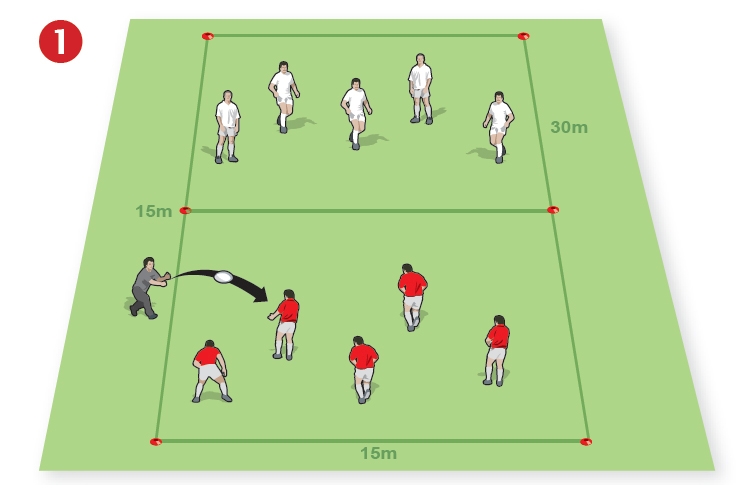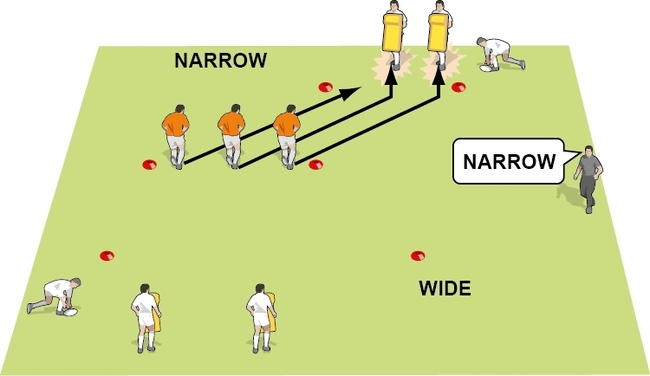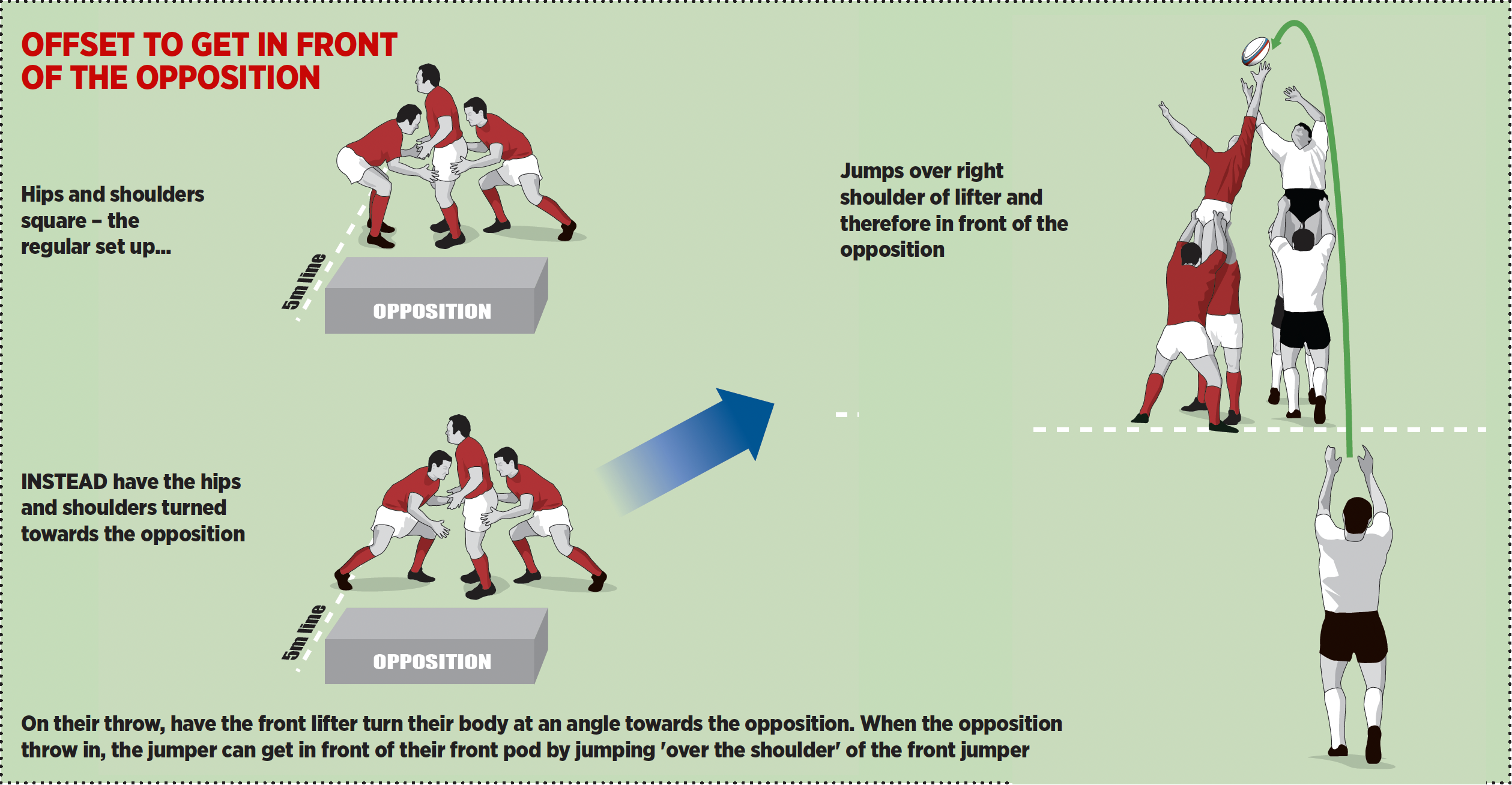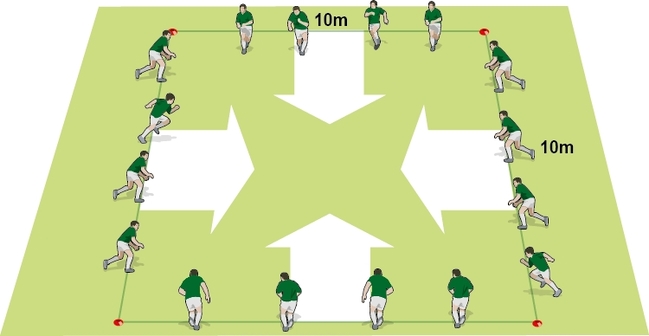Rugby coaching tips for passing skills
Passing and Handlingby Dan Cottrell

Game winning passes are often made when players are off balance, or not in full control of their next step. Here are some of the training methods I use to recreate these situations. I always encourage my players to pass accurately.
1. Through ladders
With greater access to footwork equipment, such as ladders, it seems an ideal opportunity to practise "fast feet" and passing at the same time. Simple passes can be done at a set point. For example, after three steps in the first ladder, four steps in the next. Another way is that a coach or receiver could shout for the ball at anytime. The pass would have to be delivered immediately.
With more confidence in ladder work, players could be performing some quite complicated footwork drills combined with passing.
2. Old tyres
Instead of ladders, coaches can use old tyres. (These are often free, since garages are often keen to get rid of them.)
Get your players to step through them, or even balance on them, to give and take passes. You could also set up quite an intricate obstacle course with a pass having to be made at specified tyres.
Since Rugby Coach first mentioned this rugby drill session back at the start 2004, it has become a popular training method among readers.
3. Off one foot
A particular favourite of mine is making players pass when they are hopping on just one foot. In particular this drill can help improve the ability of players to pass the ball when they are running normally.
My experience of the drill indicates that it is best to get the player to run first, then revert to hopping before passing the ball. It is easier to pass left hopping on the right foot and vice versa, so ensure that the players are challenged to pass the ball both ways.
4. Backwards
Though running backwards in a game does not happen that much, it still provides an interesting diversion from the normal passing drills, as well as enhancing the players' awareness of the passing dynamics.
Players should pass to receivers running towards them and then to receivers running away from them to get the most benefit. It certainly keeps the passing player’s head up. The challenge of staying out of harms way promotes quicker feet than running forwards.
5. Surprises
Running through a random "minefield" of cones, bags and clothing can cause enough of a distraction to increase the pressure on the pass. As players try to avoid the various "traps", encourage them to pass to team mates outside the "minefield".
A more advanced session could include tackle bags being tipped over as the players approach, with a pass being executed immediately the bag has been hurdled or avoided.
6. Hurdles
Hurdling obstacles is the natural progression from ladders and tyres. Again passes should be made after the hurdle has been cleared. Passes could be made on the run, or after a series of jumps back and forth or side to side, and with the ball given and taken at certain landing points.
7. Sprinting
Most players slow down to make a pass. I don't advocate passing while players are sprinting during a game, but you could try it in a practice to challenge your players.
Newsletter Sign Up
Coaches Testimonials

Gerald Kearney, Downtown Las Vegas Soccer Club

Paul Butler, Florida, USA

Rick Shields, Springboro, USA

Tony Green, Pierrefonds Titans, Quebec, Canada
Subscribe Today
Be a more effective, more successful rugby coach
In a recent survey 89% of subscribers said Rugby Coach Weekly makes them more confident, 91% said Rugby Coach Weekly makes them a more effective coach and 93% said Rugby Coach Weekly makes them more inspired.
Get Weekly Inspiration
All the latest techniques and approaches
Rugby Coach Weekly offers proven and easy to use rugby drills, coaching sessions, practice plans, small-sided games, warm-ups, training tips and advice.
We've been at the cutting edge of rugby coaching since we launched in 2005, creating resources for the grassroots youth coach, following best practice from around the world and insights from the professional game.


